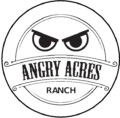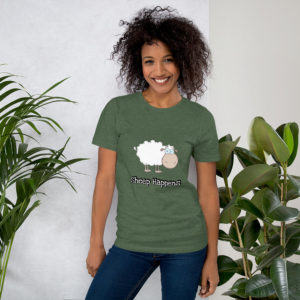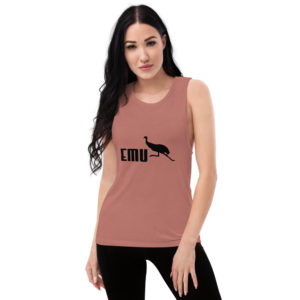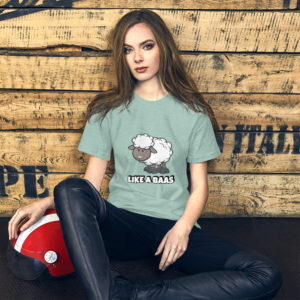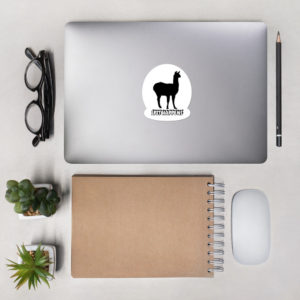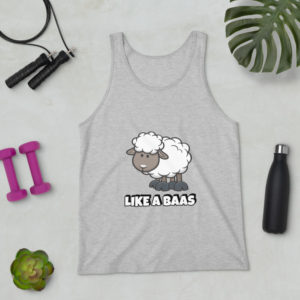Boer Goats

The Boer or Boerbok is a South African breed of meat goat.[2] It was selectively bred in the Eastern Cape from about 1920 for meat qualities and for the ability to survive by grazing on the thorn veldt of that region.[4]: 363 It has been exported to many countries, and has been used to improve the meat qualities of other breeds.[5]: 10 [3]
History
Europeans arriving in the Cape in the seventeenth century found an established population of goats kept by Khoikhoi peoples. These were small, with short speckled coats; it was thought that they had been brought to the area by peoples migrating southwards down the eastern coast of Africa.[4]: 362 In following centuries, goats kept by Boer farmers in the Eastern Cape derived from stock acquired from Khoikhoi and Bantu peoples, possibly with some influence from the Angora or from European or Indian stock.[6]: 342 A variety of types and colours was described in the 1830s; by the end of the century the Boer was a large and powerful goat with a convex profile and lop ears, bearing some resemblance to the Anglo-Nubian.[4]: 362 A census in the Cape Colony in 1891 found 3444019 head.[7]: 65
Selective breeding for specific qualities began in about 1930, initially for foraging ability and for meat quantity and quality, later also for coat colour – specifically for the white body with red-brown head that now characterises the breed.[6]: 342
A breed society, the Boer Goat Breeders' Association or Boerbok Telersvereniging, was started in Somerset East in 1959.[6]: 342 [8]
The Boer has been exported to many countries of the world, in all five inhabited continents. In 2025 it was reported to DAD-IS by 72 countries, of which 30 reported population data; populations of 5000 or more were reported by Argentina, Australia, Brazil, Chile, Colombia, Namibia and South Africa; the total population world-wide was estimated at 182863.[3]
Characteristics
The Boer is a large goat: the average weight of an adult male is some 115 kg, with a mean height reported in 1984 at over 94 cm.[4]: 363 [2] The coat is glossy and short; the recommended colouring is white with a reddish-brown head with a white blaze, and pigmented skin. The ears and horns are of medium size; the ears are broad, pendulous and smooth, the horns dark in colour, backward-curving, round and solid.[4]: 363
It is well adapted to grazing on a wide variety of local biomes, including sourveld, coastal veld, mixed veld and thornveld.[9]: 83 It has a fast growth rate and good carcass qualities, good resistance to disease and good adaptation to hot, dry semi-desert conditions.[citation needed]
The ewes are polyoestrous and are capable of breeding at any time of year; the natural breeding season is in April and May (i.e., in autumn in the Southern Hemisphere), and breeding activity is at its lowest in late spring and early summer, or approximately November to January.[10]: 171 The oestrous cycle lasts approximately 21 days, the oestrus some 30–45 hours.[10]: 171 The average gestation period is approximately 148 days, and the anoestrous post-partum period varies from some 30 to 80 days; conception is usually confirmed between 42 and 82 days after parturition.[10]: 171
The age of puberty in ewe kids depends on the season of their birth, varying from a mean of about 157 days for those born in mid-summer (January) – and thus weaned in the natural autumn (April/May) breeding season – to about 191 days for those born in late winter (August).[10]: 172 Weights at puberty are roughly in the range 24–32 kg with a mean of about 28 kg for ewes receiving a low-energy diet, and 24–38 kg with mean of about 31 kg for those on a higher-energy regime.[10]: 172
Ewes can be managed so that they give birth three times in every two years.[10]: 355 Single, twin, triplet and quadruplet births occur in the ratio 25:59:15:1.[10]: 175
Use

The Boer is a meat breed, and is reared principally for that reason. Under extensive management in the sub-tropics, a weight gain of approximately 175 g per day may be expected; daily gains of more than 200 g are possible under intensive conditions.[11]: 355 The goats are able to exploit low-quality scrubland, grazing on thorn trees, bushes and shrubs;[12]: 6 they may be used in vegetation management, and are kept for this purpose in some areas of thornveld.[9]: 83
The milk yield of ewes is some 1.5–2.5 kg per day, with about 7.7% fat and 4.3% protein.[13]: 291
References
- ^ Barbara Rischkowsky, Dafydd Pilling (editors) (2007). List of breeds documented in the Global Databank for Animal Genetic Resources, annex to The State of the World's Animal Genetic Resources for Food and Agriculture. Rome: Commission on Genetic Resources for Food and Agriculture, Food and Agriculture Organization of the United Nations. ISBN 9789251057629. Archived 23 June 2020.
- ^ a b c d e f Breed data sheet: Boer Goat/ South Africa (Goat). Domestic Animal Diversity Information System of the Food and Agriculture Organization of the United Nations. Accessed September 2024.
- ^ a b c Transboundary breed: Boer. Domestic Animal Diversity Information System of the Food and Agriculture Organization of the United Nations. Accessed April 2025.
- ^ a b c d e f Valerie Porter, Lawrence Alderson, Stephen J.G. Hall, D. Phillip Sponenberg (2016). Mason's World Encyclopedia of Livestock Breeds and Breeding (sixth edition). Wallingford: CABI. ISBN 9781780647944.
- ^ Osman Mahgoub, I.T. Kadim, E.C. Webb (2012). Goat Meat Production and Quality. Wallingford: CABI. ISBN 9781845938499.
- ^ a b c K. Ramsay, D. Swart, B. Olivier, G. Hallowell (1999). An evaluation of the breeding strategies used in the development of the Dorper sheep and the improved Boer goat of South Africa. ICAR Technical Series. (3): 339–346. Utrecht: International Committee for Animal Recording.
- ^ Henry Stephen Holmes-Pegler ([1909]). The Book of the Goat: Containing full particulars of the various breeds of Goats and their profitable management, fourth edition. London: L. Upcott Gill.
- ^ Founding of the Society. Aliwal-North: Die Suid-Afrikaanse Boerboktelersvereniging/The South African Boer Goat Breeders' Association. Accessed September 2024.
- ^ a b [National Department of Agriculture/Agricultural Research Council] (June 2006). South African Country Report on Farm Animal Genetic Resources. Pretoria: Department of Agriculture. Annex to: Barbara Rischkowsky, Dafydd Pilling (editors) (2007). The State of the World's Animal Genetic Resources for Food and Agriculture. Rome: Commission on Genetic Resources for Food and Agriculture, Food and Agriculture Organization of the United Nations. ISBN 9789251057629. Archived 10 January 2017.
- ^ a b c d e f g J.P.C. Greyling (May 2000). Reproduction traits in the Boer goat doe. Small Ruminant Research. 36 (2): 171–177. doi:10.1016/S0921-4488(99)00161-3.
- ^ W.A. Van Niekerk, N.H. Casey (December 1988). The Boer goat. II: Growth, nutrient requirements, carcass and meat quality. Small Ruminant Research. 1 (4): 355–368. doi:10.1016/0921-4488(88)90061-2.
- ^ K.A. Ramsay, E.F. Donkin (2000). [ A review of the current status of goat research and development in South Africa]. Conference paper, in: Proceedings of Regional Workshop on Goat Development in Southern Africa, Mangochi, Malawi, 31 July to 4 August 2000. 31: 1–16.
- ^ N.H. Casey, W.A. Van Niekerk (September 1988). The Boer goat. I: Origin, adaptability, performance testing, reproduction and milk production. Small Ruminant Research. 1 (3): 291–302. doi:10.1016/0921-4488(88)90056-9.
| Authority control databases: National |
|---|
Our ONLINE SHOP
Check Out Our Gear
-

Sheep Happens Short-Sleeve Unisex T-Shirt
$25.00 – $33.00Price range: $25.00 through $33.00 Select options This product has multiple variants. The options may be chosen on the product page -

EMU Ladies’ Muscle Tank
$27.00 Select options This product has multiple variants. The options may be chosen on the product page -

Like A Baas Short-Sleeve Unisex T-Shirt
$26.00 – $34.00Price range: $26.00 through $34.00 Select options This product has multiple variants. The options may be chosen on the product page -

Bacon Seeds Short-Sleeve Unisex T-Shirt
$26.00 – $34.00Price range: $26.00 through $34.00 Select options This product has multiple variants. The options may be chosen on the product page -

Spit Happens Bubble-free stickers
$4.50 – $5.50Price range: $4.50 through $5.50 Select options This product has multiple variants. The options may be chosen on the product page -

Like A Baas Unisex Tank Top
$26.50 – $28.50Price range: $26.50 through $28.50 Select options This product has multiple variants. The options may be chosen on the product page
